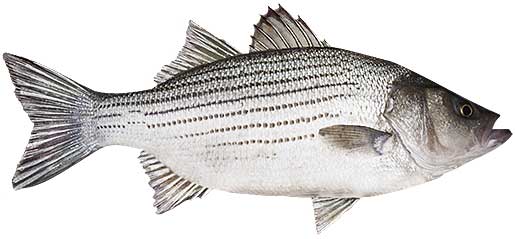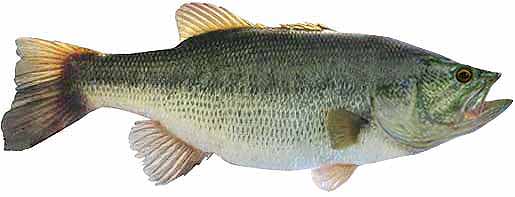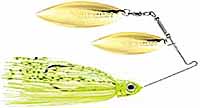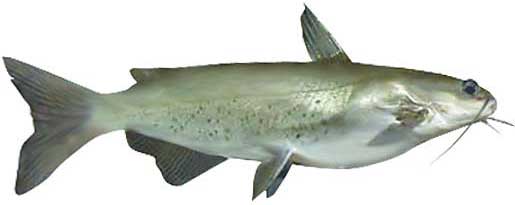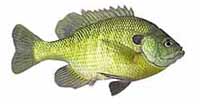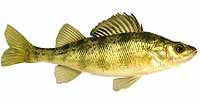Fishing Report For Lake Arthur, PA
AKA: Moraine Park Lake
By Rick Seaman
Last updated on .
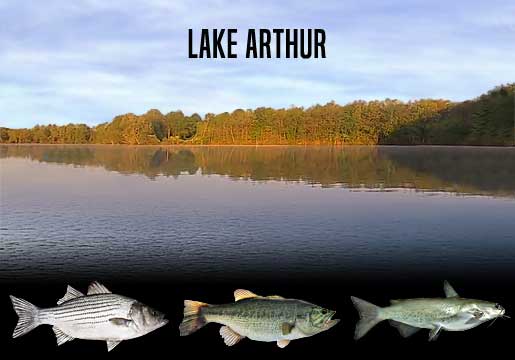
Fishing Reports
Popular Fish Species Lake Arthur, PA
Hybrid Striped Bass
Current Report: Poor To Good
Reports by locals point out that the best fishing is during Spring and Fall.
FALL. In Fall, hybrid stripers return to shallow water, the upper end of the lake, and into inflowing water if available. Early in the day wipers chase bait to the surface and feed aggressively, making this an excellent time for topwater action. Mid day they move into 8 to 20 feet of water. Look for structure nearby deeper sections in channels, and fish them thoroughly. Most any lure that resembles shad will catch wipers at this time of year.
WINTER. In Winter, hybrid stripers again hang out in deeper water and feed close to the bottom. Warm afternoons occasionally draw stripers shallower, so look for them around the 10-foot range as they feed on roaming schools of alewives and gizzard shad. In Winter it is important to locate schools of bait, then look for wipers schooling below the bait. Fish finders, and forward facing sonar, are a big help in locating these roaming schools. After ice out ice fish are being caught while trolling or drift fishing. Spoons, swimbaits, blade baits, crankbaits, live bait and cut bait are typically effective this time of year. Due to slower metabolism, anglers are triggering more strikes by making slower presentations.
SPRING. When water temperatures rise into the mid 60's now, it's the ideal time for hybrid stripers to spawn. There are plenty of hybrids averaging 2 to 3 pounds, with an occasional 5-pound plus fish being caught. In Spring, work wind-blown points, creeks, and the upper end of the lake if there is inflowing water. If they spawn, they will lay eggs in flowing water. Look for deeper holes in the river channels, as they are a good holding place for hybrid stripers after the spawn.
SUMMER. In Summer, these wipers typically hang out in 10 to 20 feet of water (deeper where possible), staying close to schools of bait. Morning often draws hybrid stripers to much shallower water, so look for them around the 8 to 12-foot range as they feed on shallow, roaming schools of alewives and gizzard shad. Being successful at fishing for stripers in Summer is a matter of locating schools of bait, and the wolf packs of wipers are likely to be nearby. Fish finders, and sonar electronics, are a big help in locating these roaming schools. Nice wipers are being caught by casting, trolling or drift fishing. Spoons, blade baits, crankbaits, live bait and cut bait are all effective here.
Largemouth Bass
Current Report: Good
FALL. Now that Fall has arrived, bass here have moved shallow, following schools of baitfish into coves and shallow bays around 4 to 15 feet of water. Currently topwater, jerkbaits, crankbaits, and slow-rolled spinnerbaits are catching most of the bass. The Keystone Bass Buddy Circuit reported that it took nearly a 3-pound average to take the top spot in the 2024 Lake Arthur event. Later in Fall, as deeper water cools, bait and bass move out to ledges, channel edges, points and humps where flutter spoons, jigs and drop shots are often good choices in 8 to 20 feet of water.
WINTER. Winter will isolate largemouth around slightly deeper structure, flats, points and creek channels. They can be found from 15 to 20 feet deep. Here they hold, feeding less frequently, awaiting warmer water to return in Spring. Slow presentations are key to getting bites.
SPRING. Once water temperatures rise into the low 60's, largemouth will move from deep wintering holes, to shallower water nearby spawning areas. Alewives and gizzard shad are the primary diet for bass here, so lures imitating them are catching good numbers, as well as an occasional trophy fish. Vibrating jigs, jerkbaits. spinnerbaits and crankbaits typically get bites just away from the shoreline. I prefer mid-range crankbaits, like the Rapala DT-6, which are a good way to cover lots of water. At this time they are feeding aggressively in about 3 to 10 feet of water, preparing for the spawn. Once water warms into the mid to high 60's, they will move into 2 to 6 feet of water, and create nests, then lay their eggs. Immediately afterwards, females move to deeper water and males remain to guard the eggs, and then the fry. After a couple weeks, the males also move to slightly deeper water. Deep-diving crankbaits, vibrating jigs, plastic worms and swimbaits are catching bass during this period.
SUMMER. Water temperatures will warm considerably in Summer. Bass will feed shallow, early and late in the day, where they will be caught in 5 to 20 feet of water. Topwater, square-bill crankbaits and spinnerbaits. Wacky-rigged stick worms always catch finicky bass when the bite is slow. Largemouth bass here feed on gizzard shad, alewives, small sunfish, and crawfish. During the hotter parts of the day, they are being caught on points, channel edges, and ledges 15 to 20 feet deep.
Channel Catfish


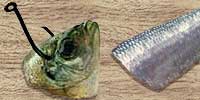
Current Report: Good To Very Good
FALL. Fall is one of the better times of year for catching channel catfish. Early in Fall they cruise the shallows, in search of food. Channel cats are virtually all over the lake, and a simple bait like earthworms and alewives are reportedly top producers here. Most anywhere you can get to the shoreline you have a chance to catch channel catfish. The Bear Run Fishing Pier is a good place for those who prefer easy access. Later, in the season they migrate away from the shallows and current, to moderately deep flats and channel edges on the main body of the lake. They can typically be found from 4 to 20 feet deep. Fishing for channel catfish is often productive around any kind of structure. Road beds, creek channels and rocky points are all good places to begin. Drift fishing or slow-trolling baits along mid-depth structure is popular and generally productive. Use a slip sinker or Carolina rig setup. Use cut bait, alewives, nightcrawlers, shrimp or prepared baits. They remain in these areas and feed aggressively in preparation for Winter.
WINTER. In Winter, the channel cats gather in deep holes and go virtually dormant, especially if water cools into the 40's. They hole up in pockets, deeper channels, ledges, and the basin areas from 15 to 20 feet deep and await warmer water. Slow presentations, especially cut bait, can still entice strikes. Often mid day through the afternoon anglers are catching them a bit shallower on the same structure.
SPRING. In Spring, when water temperatures rise into the high 40's, channel catfish start their migration into coves and up river. Look for them in 4 to 12 feet of water. They hold here, and feed aggressively, around relatively shallow cover until water warms into the mid 70's, at which time they begin the spawn process. Anglers are using slip sinkers, 3-way rigs, or Carolina rigs to get, and keep, the bait close to the bottom. Focus on shallow flats in late evening. There are good numbers of decent-size channel catfish being caught.
SUMMER. In Summer, slow-moving water, at the river end of the lake draws catfish to feed, in mid depths. Now they are scattering, locating cover in slightly cooler water. Reports indicate the most successful anglers are using nightcrawlers, cut bait or shrimp. Most channel cats hold in 8 to 20 feet during the day, and 5 to 10 feet during the night. Fishing from late in the day until midnight is producing some of the best results, as this is their prime feeding time.
Fishing Video
Fish species to fish for...
Guide to fishing for largemouth bass, channel catfish, black crappie, white crappie, walleye, bluegill, pumpkinseed sunfish, yellow perch, hybrid striped bass, muskie and northern pike at Lake Arthur in Pennsylvania.
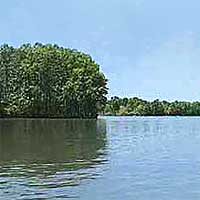 Located within Moraine State Park, Lake Arthur is a 3,200-acre lake offering striped bass, largemouth bass, catfish, crappie and sunfish. The lake has multiple boat launch ramps, a marina, boat rental and fishing docks. A 20 hp maximum for boat motors makes this lake a pleasant place for fishing from a boat or from shore.
Located within Moraine State Park, Lake Arthur is a 3,200-acre lake offering striped bass, largemouth bass, catfish, crappie and sunfish. The lake has multiple boat launch ramps, a marina, boat rental and fishing docks. A 20 hp maximum for boat motors makes this lake a pleasant place for fishing from a boat or from shore.
Primary fish species to catch
Click images for fishing tips and details about each species.
Today's Weather & Forecast
Fishing Boat Rentals
Click here for fishing boat rentals.
Marinas
Click here for marinas.
Public Boat Launch Ramps & Landings
Click here for boat ramps.
Fishing License
Click here for a Pennsylvania Fishing License.
Map - Fishing & Access
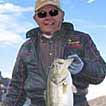 Rick Seaman is a fishing enthusiast with over five decades of fishing experience, a retired tournament fisherman, author of numerous published articles on fishing, and co-author of the book "Bass Fishing - It's not WHAT you throw, It's WHERE you throw it".
Rick Seaman is a fishing enthusiast with over five decades of fishing experience, a retired tournament fisherman, author of numerous published articles on fishing, and co-author of the book "Bass Fishing - It's not WHAT you throw, It's WHERE you throw it".
 Contact Information
Contact Information
Davis Hollow Marina
N Shore Drive
Portersville, PA 16051
724 368-9346
Fishing lakes in each state
101125


